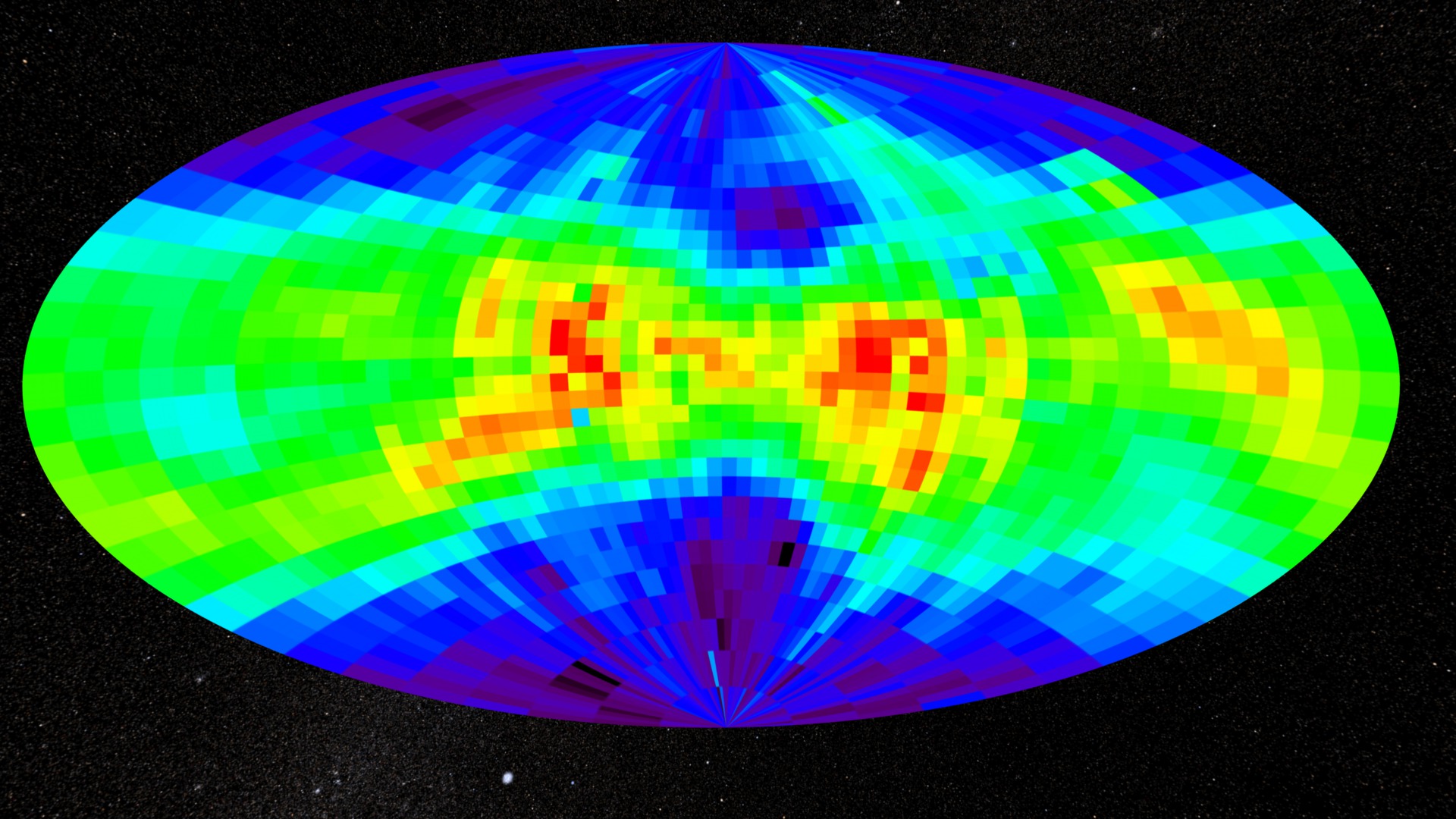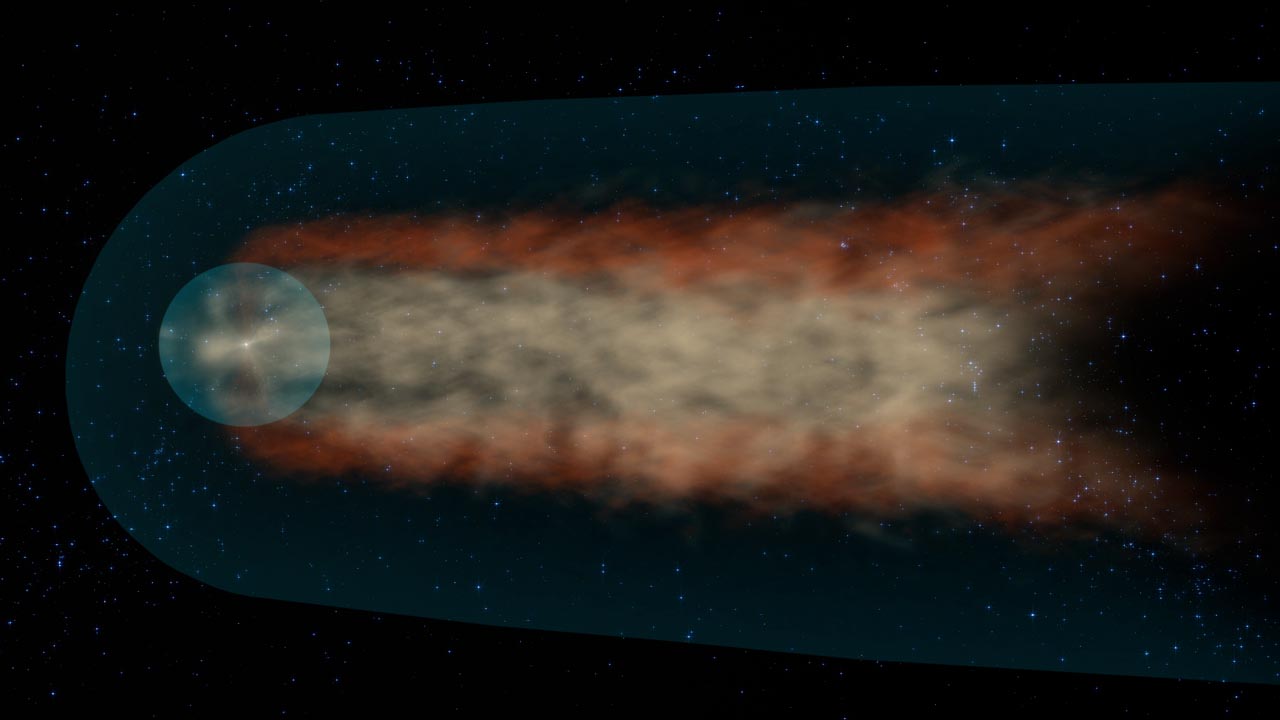Downstream Colors
Our sun, like the planets that circle it, is moving through space. About every 230 million years it completes one orbit around the center of the Milky Way galaxy. The entire solar system comes along for the ride, of course, residing within a massive, magnetic bubble called the heliosphere. Like a brightly lit comet, it was assumed the heliosphere has a leading head and a trailing tail region where streams of charged particles released from the sun meet interstellar space. But the tail section has never been observed, until now. NASA’s Interstellar Boundary Explorer, or IBEX, spacecraft has mapped the boundaries of the tail for the first time. By combining observations from the first three years of IBEX imagery, scientists found that the tail is made of fast- and slow-moving particles that are twisted by the pushing and pulling of magnetic fields outside the solar system. Watch the video to learn more.

A NASA spacecraft observes the trailing edge of the solar system.
Watch this narrated video to learn more about the heliosphere and how IBEX mapped out the solar system's tail.

The streams of charged particles that make up the heliosphere’s tail can be seen in this illustration.

Telescope observations reveal the tails of other star systems: (counterclockwise from top left) LL Orionis, BZ Camelopardalis and Mira Ceti.

IBEX launched into space in 2008.
For More Information
See NASA.gov
Credits
Please give credit for this item to:
NASA's Goddard Space Flight Center<br /
Telescope images courtesy of NASA/ESA/JPL-Caltech/GSFC/SwRI
-
Animators
- Michael Lentz (USRA)
- Walt Feimer (HTSI)
- Tom Bridgman (Global Science and Technology, Inc.)
-
Video editor
- Genna Duberstein (USRA)
-
Narrator
- Erin McKinley (OSU)
-
Producer
- Genna Duberstein (USRA)
-
Scientist
- Eric Christian (NASA/HQ)
-
Writer
- Karen Fox (ADNET Systems, Inc.)
Release date
This page was originally published on Thursday, August 15, 2013.
This page was last updated on Wednesday, May 3, 2023 at 1:51 PM EDT.

